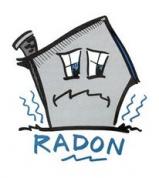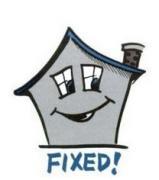

We Offer:
- Radon Detection
- Seam and crack sealing
- Crawl space sealing
Last Updated: May 3, 2024
Frequently asked questions:
o What is Radon?
Radon is a naturally occurring, odorless, radioactive gas caused by uranium deposits in the soil. As uranium decays, one of the by products is the radioactive gas radon. This gas migrates through the soil and enters primarily through the basement.
o What harmful effect does Radon have?
As reported by the EPA, radon is the number two leading cause of lung cancer in America. The effects of long term exposure has the same negative effect as smoking cigarettes. See the link to the EPA's website for additional details and information.
o How do I know if I have Radon?
Every home has radon at some level. Even outside air contains trace amounts of radon. Only by testing with an EPA approved method can the exact level of radon be determined. However, in the Siouxland area, it is estimated that 3 out of every 4 homes have levels of radon above 4.0 pCi/l. The level at which the EPA recommends corrective action be taken.
o How do I test for Radon?
There are two options for testing for radon. A local EPA certified radon tester may be contracted. (www.tristatecertified.com) The second option is with a radon test kit. These are typically available at local home improvement and hardware stores or may be ordered online through state Health and Human Service agencies. Radon Mitigators, Inc. is a licensed mitigation company and NOT a radon testing resource. As we are licensed to correct the issue, regulations exist to prevent a conflict of interest by testing our own work.
o Once the level of radon has been determined, can the issue be corrected?
Yes. Based on test results, different options exist and consulting a licensed, credentialed mitigation specialist is the best course of action.
o I'm interested in purchasing a home and noticed a mitigation system has already been installed. Does this mean the home has an issue?
No. Quite the contrary. As mentioned earlier, all homes have radon at some level. A property with a mitigation system installed simply means the issue as has been addressed and is likely to be lower than homes without a system installed.
o How often should I test for Radon?
The EPA recommends testing the level of radon every two years. This includes homes with mitigation systems installed. The primary reason is as homes age, new cracks in the foundation may occur creating entry points for radon. A periodic test of radon ensures the levels remain low. Self test kits are easy to use, inexpensive and provide accurate results.
 home
home
 contact
contact
 About Us
About Us
 Services
Services
 Siouxcityia Homemove
Siouxcityia Homemove


